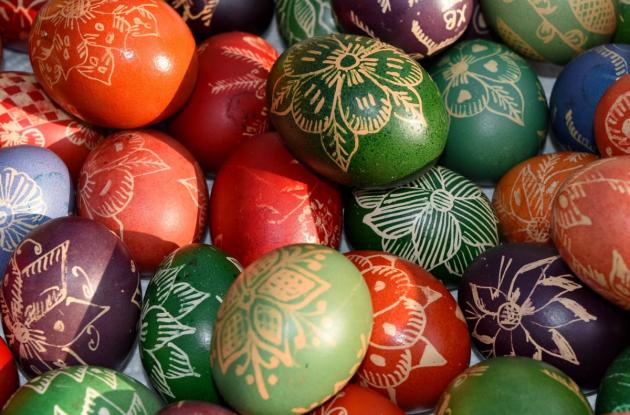The symbolism of the Easter egg
Eggs symbolise new life and the coming of spring. Therefore, it has also been included as a symbol of Easter since Catholic times. Read more about the origin and development of the Easter egg here.
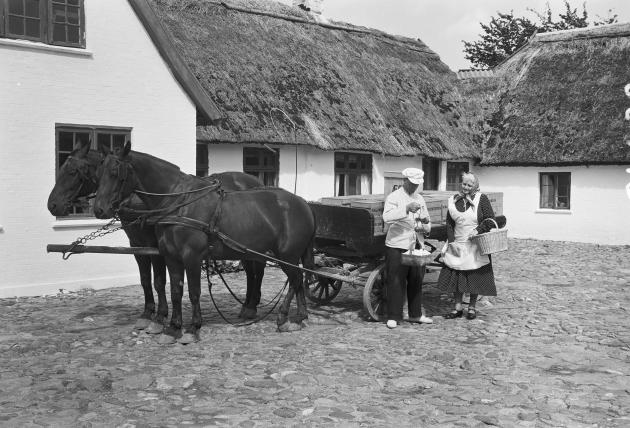
Photo: Sven Türck
The tradition of eating and decorating eggs for Easter is known throughout Europe. During Lent (the time just before Easter) people were not allowed to eat eggs, and when Lent ended on Easter Day, it was celebrated by, among other things, eating eggs - preferably many more than you were used to.
As is often the case with old traditions from peasant society, there was also a more down-to-earth reason why eggs were a favourite food for Easter. Throughout winter, the hens laid very few or often no eggs at all. Egg laying is dependent on light, of which there was not much during a Danish winter without electricity.
Spring thus meant a new egg production after a long winter without fresh eggs.
What does an egg symbolise?
The egg has been perceived as a symbol of new life; as something that has a special life force in it. Many also attributed a magical power to the egg, which they tried to transfer to other animals and to humans.
As a fertility symbol, the egg could be linked to love and was therefore used as a sort of oracle: If an engaged girl wanted to know if her boyfriend would remain faithful to her, she could save an egg. If it was still fresh after a year, her hopes would come true!
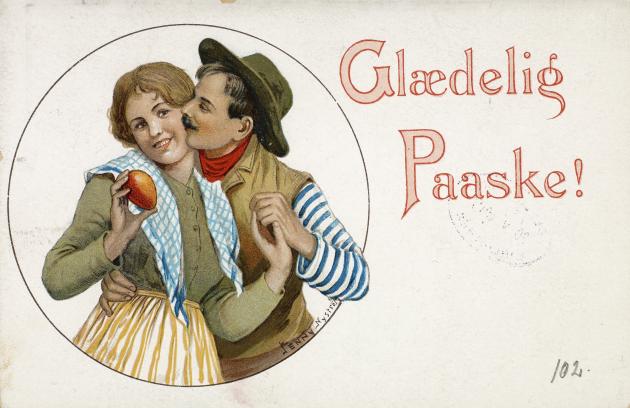
Photo: Jenny Nyström
Eggs as a gift
In the past, priests, clergymen, and servants alike received a portion of their salaries in produce. At Easter, they often received eggs, just as eggs were used as a special gift for family and friends. How many eggs you got depended on your rank on the farm.
In several places in Denmark, it was customary in the 19th century that children, particularly poor children, went from farm to farm with a basket at Easter time. Then they "sang for eggs" at the doors. Maybe they also quoted a little from the Bible.
The library's folklore archives contain reports that the servants were given coloured eggs, which they placed on the windowsill at the long table where they ate. Then the eggs were readily available when the meal included this delicacy.
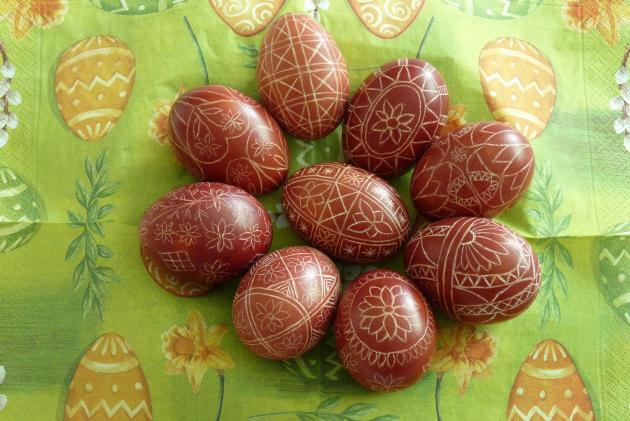
Photo: Wikimedia
Decorating Easter eggs
Eggs have been dyed in Denmark since the 17th century. King Christian 4's daughter, Leonora Christine, has written in her memoirs 'Jammersminde' that in 1667, she exchanged painted Easter eggs with another prisoner when she was sitting in Blåtårn.
They dyed with onion peels and beetroot juice and plant materials, such as leaves and flowers from daffodils, roots and leaves from nettles, and chervil as well as moss from trees. Later, coffee grounds and tea leaves were also used when these drinks were introduced. Even hay and stone lichen could be used.
In the second half of the 19th century, people began to use aniline dyes, and after industrialisation, it was possible to buy powder mixtures or try ink, fruit dye, watercolour, or coloured tissue paper.
Only in the 20th century did the Danes start "blowing the eggs empty" and then decorate them, for example with papier maché. From the 1920s, half shells are seen decorated with cones or the like that were supposed to represent chickens, and after the occupation, the contents of the half shells have often been watercress or spring flowers.
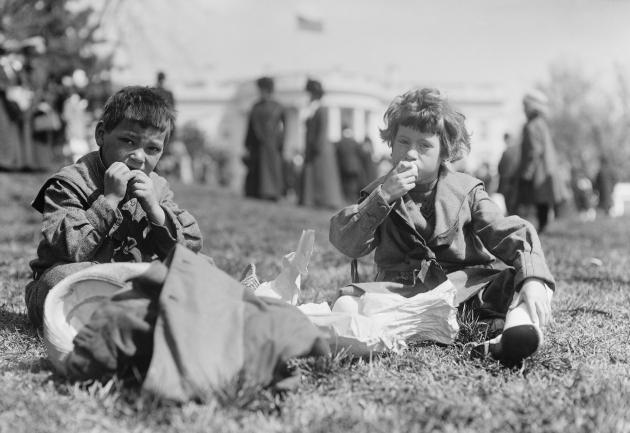
Photo: Wikimedia
The art of rolling eggs
In the archives of the library's folklore collection, there are accounts that the peasant society's servants rolled eggs during the Easter holidays
. In addition to the eggs' function as a special part of the salary and as a gift, they have also been used to play with.
Egg-laying could be an indoor game but usually took place outside. In many places, the hard-boiled eggs were rolled down a hill or slope until the shell was very cracked, after which they were eaten.
The game could be expanded so that one tried to hit each other's eggs. If you managed to hit someone else's egg, you had to get it. Another element of competition could be rolling one's egg the farthest or throwing targets with the hard-boiled eggs.
Rolling eggs is one of the customs that still lives on, especially in families with children.
